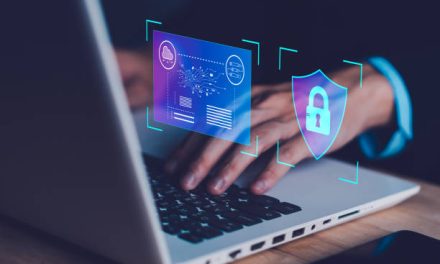In today’s digital landscape, organizations face ever-evolving cybersecurity threats. Understanding how to measure cybersecurity risk is crucial for businesses and individuals alike to protect sensitive information and ensure operational continuity. Cyber threats can range from sophisticated ransomware attacks to insider threats that compromise data integrity. This comprehensive guide will explore key methods, metrics, tools, frameworks, and best practices to help you assess and manage cybersecurity risks effectively.
Understanding Cybersecurity Risk: What It Is and Why It Matters
Cybersecurity risk refers to the potential for loss, damage, or disruption due to cyber threats. These risks can arise from malware, phishing attacks, data breaches, and insider threats. Understanding the impact of these risks on an organization helps security teams develop strategic defenses to mitigate vulnerabilities and comply with regulatory requirements.
Failing to measure cybersecurity risk accurately can lead to severe financial losses, reputational damage, and legal consequences. In recent years, cyber incidents have resulted in massive data breaches costing companies millions of dollars. With the increasing adoption of digital tools and remote work models, organizations must be proactive in assessing and mitigating cyber risks.

Key Metrics and Methods to Measure Cybersecurity Risk
To effectively assess cybersecurity risk, organizations should consider the following key metrics:
- Vulnerability Scanning Results – Identifies security weaknesses in software and systems.
- Incident Frequency – Tracks how often security incidents occur within a given timeframe.
- Mean Time to Detect (MTTD) – Measures the average time taken to identify security threats.
- Mean Time to Respond (MTTR) – Evaluates the efficiency of incident response efforts.
- Cost of Data Breach – Calculates the financial impact of security incidents.
- Risk Scorecard – Uses a scoring system to assess and prioritize risks based on severity and likelihood.
- Security Control Effectiveness – Measures the efficiency of security controls in mitigating threats.
- Third-Party Risk Exposure – Evaluates risks associated with external vendors and partners.
Common Methodologies Used to Measure Cybersecurity Risk:
- Quantitative Risk Assessment (QRA) – Assigns numerical values to risks based on financial impact and probability.
- Qualitative Risk Assessment (QLA) – Uses expert judgment and descriptive scales to evaluate risk severity.
- Factor Analysis of Information Risk (FAIR) – A structured approach to quantifying cyber risk in financial terms.
- Cyber Risk Heat Maps – Visual representations of risk levels based on likelihood and impact.
- Threat Modeling – Identifies potential attack vectors and evaluates system vulnerabilities.
Additional Considerations in Cybersecurity Risk Measurement
Beyond traditional metrics, organizations should also account for emerging threats such as AI-driven cyber attacks, supply chain vulnerabilities, and the growing sophistication of social engineering tactics. Risk assessments should be dynamic, continuously evolving to reflect the latest threat landscape.

Top Tools and Frameworks for Cyber Risk Assessment
Organizations can leverage various tools and frameworks to assess and manage cybersecurity risks effectively. Some of the most widely used include:
Tools:
- Nessus – Conducts vulnerability scans and risk assessments.
- Qualys – Provides continuous monitoring and compliance reporting.
- Splunk – Analyzes security logs and detects anomalies.
- Rapid7 InsightVM – Offers real-time vulnerability management.
- RiskLens – Uses the FAIR model for cyber risk quantification.
- IBM Security QRadar – Helps detect and investigate security incidents.
- Tenable.io – Provides enterprise-wide vulnerability visibility.
- Cortex XSOAR – Automates incident response and threat mitigation.
Frameworks:
- NIST Cybersecurity Framework (CSF) – A structured guideline for risk assessment and mitigation.
- ISO/IEC 27001 – Establishes best practices for information security management.
- CIS Controls – Provides a prioritized set of security measures.
- COBIT – Focuses on IT governance and risk management.
- MITRE ATT&CK – Maps cybersecurity threats to attack techniques.
- PCI DSS – Ensures compliance with data security standards for payment transactions.
- SOC 2 – Defines controls for managing customer data securely.

Steps to Conduct an Effective Cybersecurity Risk Evaluation
To perform a thorough cybersecurity risk assessment, follow these steps:
- Identify Assets – List critical systems, data, and resources that need protection.
- Detect Threats – Determine potential cyber threats, including malware, phishing, and insider attacks.
- Assess Vulnerabilities – Conduct penetration testing and vulnerability scans.
- Evaluate Risks – Assign risk scores based on impact and likelihood.
- Implement Controls – Deploy security measures such as firewalls, encryption, and access controls.
- Monitor and Review – Continuously assess and update security strategies.
- Develop a Response Plan – Create detailed incident response procedures.
- Train Employees – Conduct regular security awareness training sessions.
- Conduct Security Audits – Regularly test cybersecurity defenses through simulated attacks.
- Review Compliance Requirements – Ensure alignment with industry regulations and data protection laws.

Best Practices for Managing and Reducing Cybersecurity Risk
- Adopt a Risk-Based Approach – Prioritize security efforts based on risk levels.
- Regular Security Training – Educate employees on cybersecurity best practices.
- Implement Multi-Factor Authentication (MFA) – Enhance access control security.
- Update and Patch Systems – Prevent exploitation of known vulnerabilities.
- Perform Regular Security Audits – Ensure compliance with industry standards.
- Develop an Incident Response Plan – Prepare for rapid threat mitigation.
- Engage Cybersecurity Experts – Leverage third-party expertise for assessments and guidance.
- Conduct Phishing Simulations – Test employee awareness with mock phishing campaigns.
- Enhance Endpoint Security – Use advanced security solutions to protect devices and networks.
- Leverage AI and Automation – Utilize AI-driven security tools to enhance threat detection and response.

Conclusion
Understanding how to measure cybersecurity risk is essential for maintaining a strong security posture. By leveraging key metrics, methodologies, and frameworks, organizations can proactively manage cyber threats and minimize potential damages. Implementing best practices and continuously evaluating risk ensures long-term security resilience.
For businesses looking to enhance their cybersecurity strategies, Marketing Technology offers expert SEO services and content marketing solutions to help improve online security awareness and digital presence. Contact us now!

Frequently Asked Questions
How do you conduct a comprehensive risk assessment?
A comprehensive risk assessment involves identifying assets, evaluating threats and vulnerabilities, analyzing potential impacts, and implementing security controls to mitigate risks. Regular monitoring and updates are crucial for maintaining an effective cybersecurity strategy.
What is a comprehensive approach to cybersecurity?
A comprehensive cybersecurity approach integrates technical, administrative, and physical security measures to protect against cyber threats. It includes risk assessments, policy enforcement, employee training, incident response planning, and continuous monitoring.
How do you conduct a cybersecurity risk assessment?
To conduct a cybersecurity risk assessment, define the scope, identify assets, assess vulnerabilities and threats, calculate risk levels, implement mitigation strategies, and continuously monitor and update security measures to adapt to evolving threats.
By following these guidelines, organizations can strengthen their cybersecurity defenses and mitigate risks effectively.





